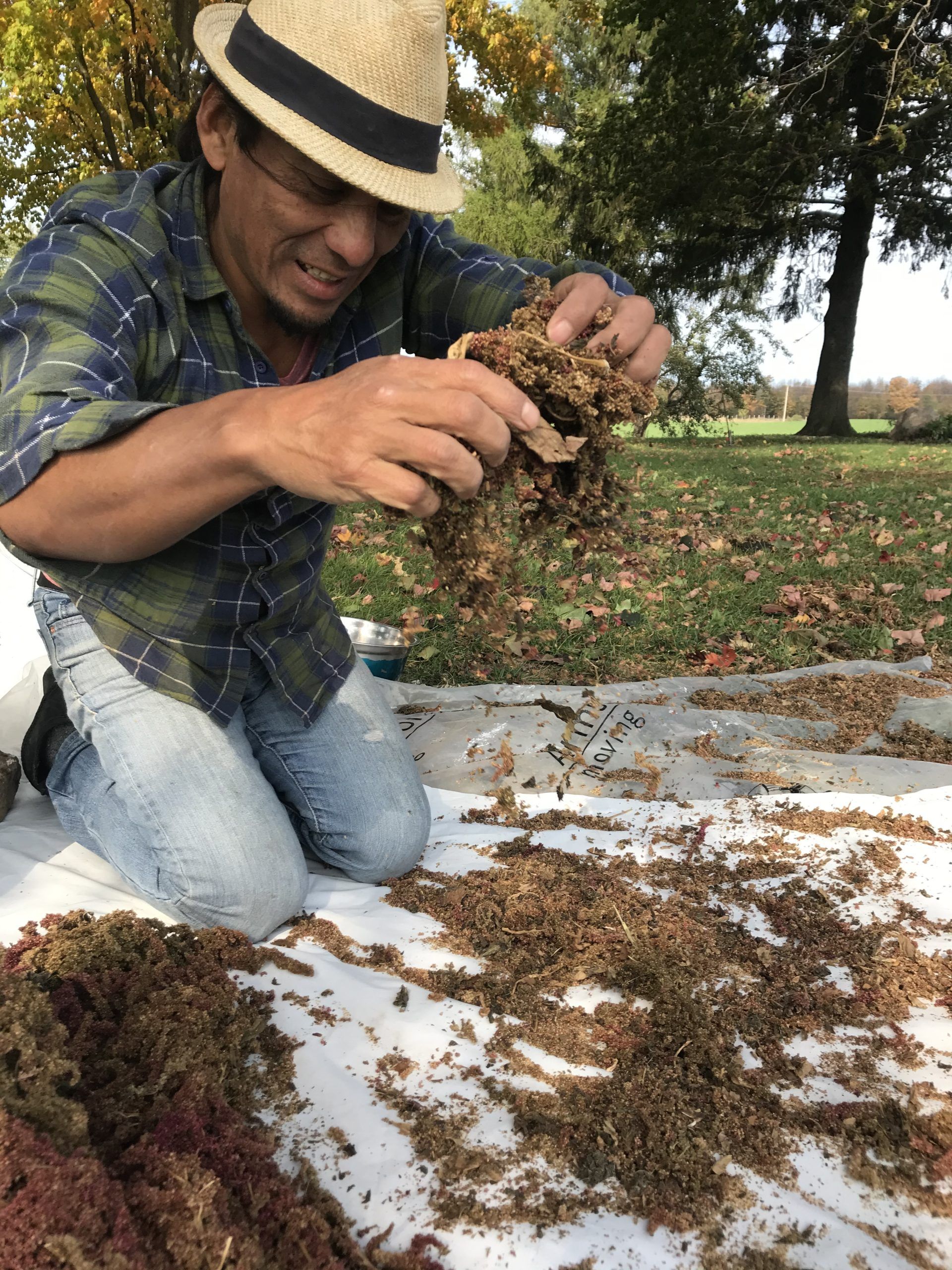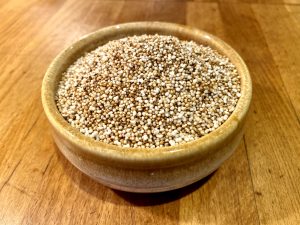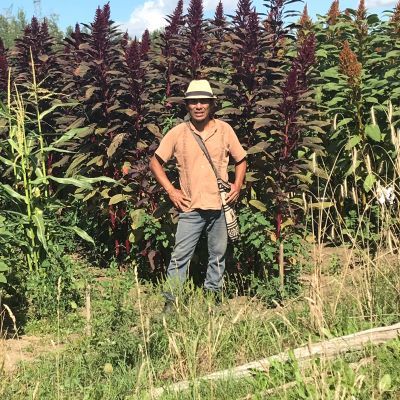Ronaldo Lec is an advocate for food & seed sovereignty, ecological agriculture, and empowerment of the peoples of the Global South through his work with ECOSOL, the Ecology & Solidarity Council. In 2020, Rony and his partner Myriam Legault performed a grain amaranth variety trial as part of EFAO’s Farmer-Led Research Program. You can find Rony & Myriam’s trial results, and many others, in EFAO’s farmer-led research library.
When and why did you start growing generally? What about amaranth?
As an Indigenous Maya from Guatemala, I come from an agricultural family and grew up in a land based culture. It was not until I was studying anthropology and started looking into the bridge between traditional knowledge and native plants that I discovered amaranth.
Why is amaranth a significant or important crop for you?
Amaranth was the basis of nutrition for millennia among cultures of Mesoamerica such as the Mexican and the Maya. Studies show that there were more tributes paid in amaranth than any other crop. Densely nutritious amaranth can become once again the backbone of our food system. Amaranth is so resilient that it is grown all over the world, from sea level to 5,000 meters above sea level, from the desert to the prairies of North America.
Please tell us a bit about where and how you grow.
Amaranth does not need so much fertility nor care, it can tolerate drought but not frost. It can be sown directly or transplanted after the soil has warmed up. Avoid growing where there is lots of pigweed, since they can cross pollinate. Leaves can be harvested after 60 days, and seeds after 120 days.
You have conducted a research project for your farm in cooperation with EFAO’s Farmer-Led Research Program. Can you describe your research trial?
My research with the EFAO was for screening varieties of amaranth to find an early-flowering variety for the short growing season in Ontario. We found a highly productive variety but it is not the best for popping seeds, and this is so important since it reflects the quality of the grain when processed.
Do you think you’d like to do a future, replicated trial to narrow down the results and find the best short season grain amaranth to grow in Ontario?
We have been approved for replicate trials in different farms with the best three varieties that were selected in the first trial. This will allow us not only to find a short season grain amaranth, but also give us an opportunity to see how it behaves in different parts of Ontario and under different growing conditions.
What did you learn from your research trials, and how will it help you in future seasons?
The first research trial helped us to screen varieties and confirmed for me again that the most productive varieties are not always the best in the kitchen.
Also, I learned that there is a growing interest in growing amaranth in Canada as a resilient crop to climate change.
What advice would you give to other growers looking to produce amaranth this season?
The first 25 days are key to determine the health of the plant and after this period it can stand just about anything. Do not confuse them with pigweed or purslane when weeding.
What are your favourite ways to eat amaranth?
Popped amaranth bars and amaranth flour ground with pumpkin seeds, peanut and sesame seeds consumed as a hot drink, or indulging by mixing it with chocolate and milk.

